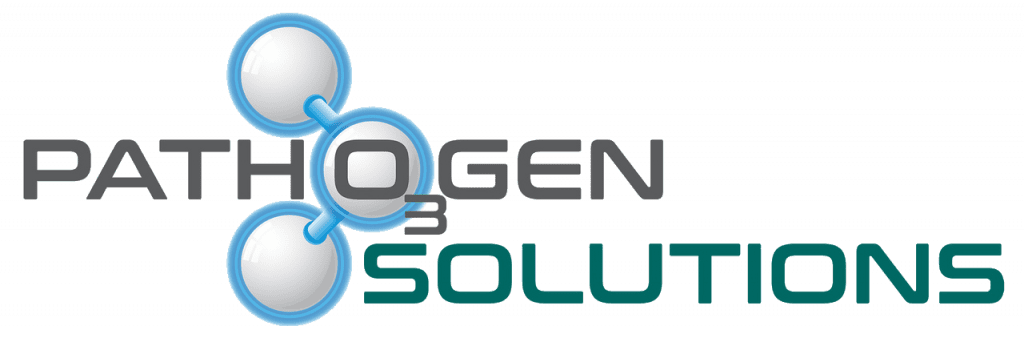
Infection control has become a critical aspect of public health, especially in the wake of recent global pandemics. It encompasses practices, procedures, and policies designed to minimize the risk of spreading infections, particularly in healthcare settings. The importance of infection control extends beyond hospitals to include various industries where hygiene and cleanliness are paramount.
PathO3Gen’s UVZone Shoe Sanitizing Technology represents a significant advancement in this field. Utilizing a combination of UV-C and Ozone, UVZone offers a highly effective solution for disinfecting shoes, a commonly overlooked source of contamination. This innovative technology is capable of eliminating up to 99.9993% of harmful pathogens in just 6 to 10 seconds.
The current global scenario underscores the need for innovative solutions like UVZone. With the rise of antibiotic-resistant bacteria and the ongoing threat of viral outbreaks, traditional methods of infection control are being challenged. UVZone’s technology provides a timely response, offering a practical and efficient means of enhancing hygiene standards.
The Goals of Infection Control
Understanding the Infection Control Program
Infection control programs are not merely protocols but a vital part of healthcare and communal environments. These systematic approaches are designed with a singular focus: to prevent the transmission of infections and protect everyone involved. The primary goal of an infection control program is to safeguard patients, staff, visitors, and the community at large from potential infections.
Achieving this goal requires a multifaceted strategy, including:
- Monitoring and Surveillance of Infections: Regular tracking of infection patterns helps in early detection and containment.
- Implementation of Standard Precautions: Adhering to established guidelines ensures consistent practices across all levels.
- Education and Training: Empowering staff with the knowledge and skills to implement infection control measures effectively.
- Continuous Improvement through Assessment and Feedback: Regular reviews and adaptations to meet the evolving challenges of infection control.
Infection Prevention and Control Objectives
The specific goals of infection prevention and control (IPC) are tailored to the unique needs of each setting, reflecting a comprehensive approach to health and safety. Key objectives include:
- Reducing the Incidence of Healthcare-Associated Infections (HAIs): Targeting common sources of HAIs to enhance patient well-being.
- Minimizing the Spread of Antibiotic-Resistant Organisms: Implementing measures to combat the growing threat of resistance.
- Enhancing Patient Safety and Quality of Care: Focusing on overall patient experience and outcomes.
- Complying with Regulatory Requirements and Standards: Meeting and exceeding local and national regulations.
To achieve these goals, strategies and best practices encompass:
- Hand Hygiene Protocols: Promoting regular and proper handwashing techniques.
- Environmental Cleaning and Disinfection: Maintaining cleanliness in all areas, including patient rooms, common areas, and equipment.
- Isolation Precautions for Contagious Patients: Implementing isolation measures when necessary to prevent the spread of contagious diseases.
- Utilizing Innovative Technologies like UVZone for Targeted Sanitization: Integrating cutting-edge solutions to enhance traditional methods.
By aligning with local guidelines and integrating innovative solutions like UVZone, infection control programs can effectively mitigate risks and contribute to a safer, healthier environment. This alignment not only reflects a commitment to excellence but also resonates with community values and expectations, reinforcing the role of infection control in shaping a resilient healthcare system.
Emerging Technologies in Infection Control
The Rise of Bacterial Resistance
The challenge of bacterial resistance is a growing concern in the field of infection control. As bacteria evolve and become resistant to existing antibiotics, traditional methods of treatment become less effective. This resistance poses a significant threat to public health, leading to increased mortality rates and healthcare costs.
The implications of bacterial resistance are far-reaching, affecting not only healthcare settings but also the food industry, agriculture, and more. It calls for a concerted effort to develop new and future technologies to combat these superbugs.
Some of the emerging technologies being developed include:
- Phage Therapy: Utilizing viruses that infect bacteria to target specific strains.
- Nanotechnology: Applying nanoparticles to deliver targeted antibiotic treatments.
- Precision Medicine: Tailoring treatments based on individual genetic makeup.
- UV-C and Ozone Combination: Such as UVZone, offering a non-chemical approach to disinfection.
These innovations represent a promising frontier in the battle against bacterial resistance, aligning with global efforts to safeguard public health.
UVZone: A Breakthrough in Shoe Sanitizing
PathO3Gen’s UVZone technology is a standout example of innovation in the field of infection control. By focusing on shoe sanitization, an often-overlooked aspect of hygiene, UVZone addresses a unique vector for pathogen transmission.
How UVZone Works:
UVZone employs a combination of UV-C light and Ozone gas to disinfect shoes. The process takes only 6 to 10 seconds, achieving kill rates of up to 99.9993% for common pathogens. The technology is designed for ease of use, with applications ranging from healthcare facilities to food processing plants.
Applications in Production, Processing, and Other Industries:
UVZone’s versatility extends beyond healthcare. Its applications include:
- Food production and processing, ensuring hygiene standards
- Manufacturing environments, reducing contamination risks
- Educational institutions, promoting a healthy learning environment
Infection Prevention in the Workplace
Importance of Infection Control Practices in the Workplace
Infection control practices in the workplace are essential for maintaining a healthy and safe environment for employees, customers, and visitors. The purpose of these practices is to minimize the risk of spreading infections, which can lead to illness, absenteeism, and decreased productivity.
Industry-specific considerations play a vital role in shaping infection control strategies. For example:
- In healthcare, stringent protocols are required to protect patients and staff from Healthcare-Associated Infections (HAIs).
- In food processing, hygiene standards must be maintained to prevent contamination and ensure product safety.
- In educational institutions, cleanliness practices help create a conducive learning environment and reduce the spread of common illnesses.
These examples illustrate the broad applicability and critical importance of infection control across various sectors.
Effective Ways to Prevent Infection
Preventing infection is a multifaceted challenge that requires a combination of traditional methods and innovative solutions. The most effective way to prevent infection includes:
- Regular handwashing and use of sanitizers
- Proper cleaning and disinfection of surfaces
- Educating employees about hygiene practices
- Implementing isolation measures when necessary
- Regular monitoring and compliance with local health guidelines
Integrating UVZone into existing protocols offers an additional layer of protection. By targeting shoes, a common but often overlooked source of contamination, UVZone complements existing infection control measures. Its quick and efficient operation makes it a practical addition to workplaces ranging from hospitals to manufacturing facilities.
Shaping the Future of Local Infection Control with UVZone
Infection control is more than a healthcare concern; it’s a community responsibility that impacts every aspect of our daily lives. From hospitals to schools, manufacturing plants to food processing facilities, the importance of maintaining hygiene standards cannot be overstated. The rise of bacterial resistance and the ongoing challenges posed by global pandemics have only heightened the need for innovative solutions.
PathO3Gen’s UVZone Shoe Sanitizing Technology, represents a significant advancement in this field. By targeting a commonly overlooked source of contamination, UVZone offers a practical and efficient means of enhancing hygiene standards across various industries. Its local production and alignment with regional standards further underscore its value as a community-focused solution.
As we look to the future, UVZone’s role in shaping infection control practices is clear. It’s not just about technology; it’s about creating safer environments for everyone. If you’re interested in learning more about how UVZone can benefit your organization, we invite you to call us at (727) 300-1069 or schedule a demo today. Whether you’re looking to schedule a demo or explore customized solutions, our team at PathO3Gen is here to assist you in taking the next step towards a healthier future.

